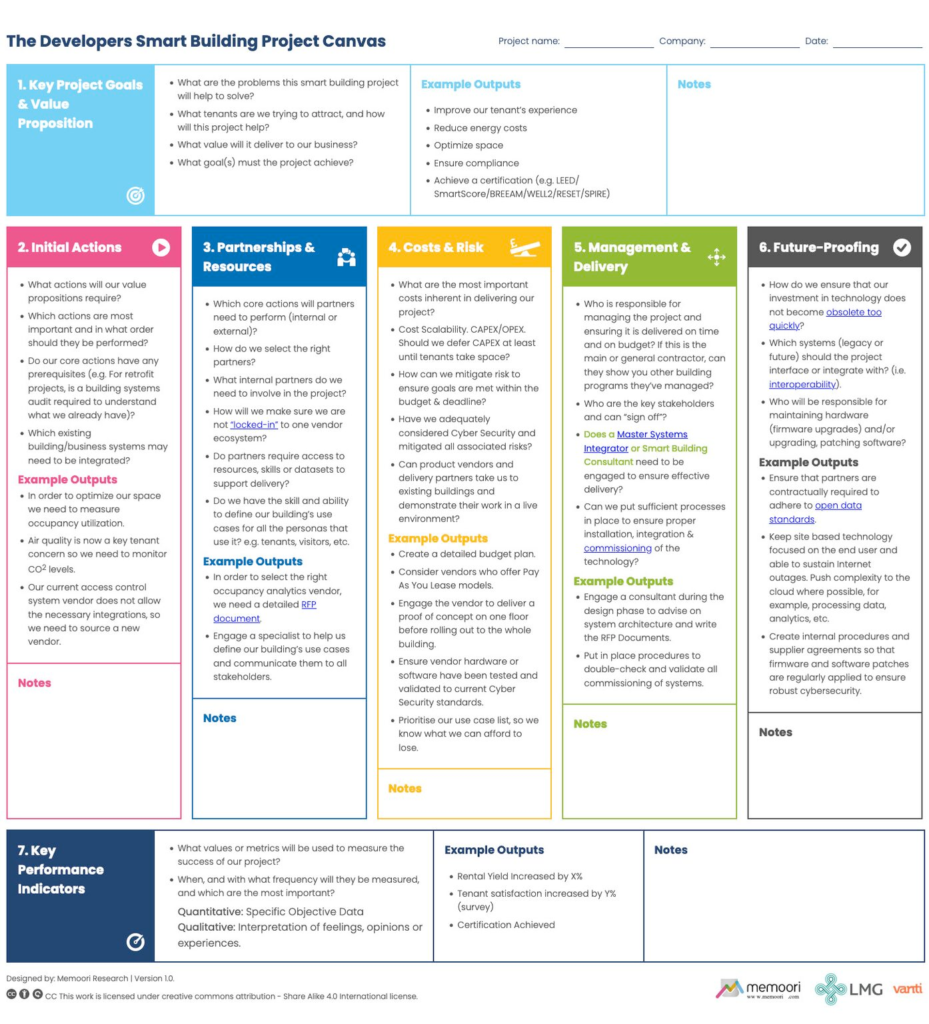
The folks at smart research analysts Memoori facilitated the collaboration with Vanti and LMG behind this Version 1 Smart Building Project Canvas above. What’s interesting about Vanti and LMG is that they are Master Systems Integrators (MSIs) that could be seen as being ‘The Application Providers’ from the 3 types of MSIs highlighted by Nexus Labs. That’s because both have a ‘platform’ although the difference between those highlights how platform might mean different things to different people. But that is one for another post.
Those MSI types are based on a presentation to the Nexus Labs community by Andrew Knueppel of Cushman Wakefield about the procuring MSI services for clients and that is also the backdrop to the canvas Memoori facilitated (see more below).
What interests me is the where both Vanti and LMG have come from representing the convergence going on in smart buildings. Vanti have a background in AV integration, whereas LMG come from Enterprise Networking and the integration of (passive) infrastructure. I mention this because those trajectories are not really represented by the way Nexus Labs describe the 3 types of MSIs and because Vanti and LMG’s respective perspectives could be seen as different from those who comes at this from Mechanical Electrical Engineering.
The Open Source idea behind Memoori’s Smart Building Canvas was to release a document under the creative commons license and encourage others to directly collaborate and add to the document by hosting it on GitHub (see here).
It’s purpose was to help ‘beginners’ avoid common mistakes when embarking on smart building projects. That’s because having spoken to MSIs, Memoori found they often said that clients can come to them without much idea of what they want to achieve beyond just wanting a ‘smart’ building.
My take is that collaborations like this require facilitating given potential collaborators have day jobs and are often involved in other initiatives driven by organisations, such as their respective trade bodies. Finding funding for that facilitation is therefore no mean feat and I can’t help think that something along these lines might be a bigger job-to-be-done by those bodies or those that have relevant Accredited Professional programmes and/or certify/accredit consultants, i.e. as part of what the Accredited Professional programmes cover and/or how they certify/accredit consultants.
That all said, I think this canvas and other frameworks I am sharing on here could also all feed into some kind of best practice guide. But for now these posts are just ‘notes to self’ about different lenses that look at who does what for whom with what, how, when, where and why.



